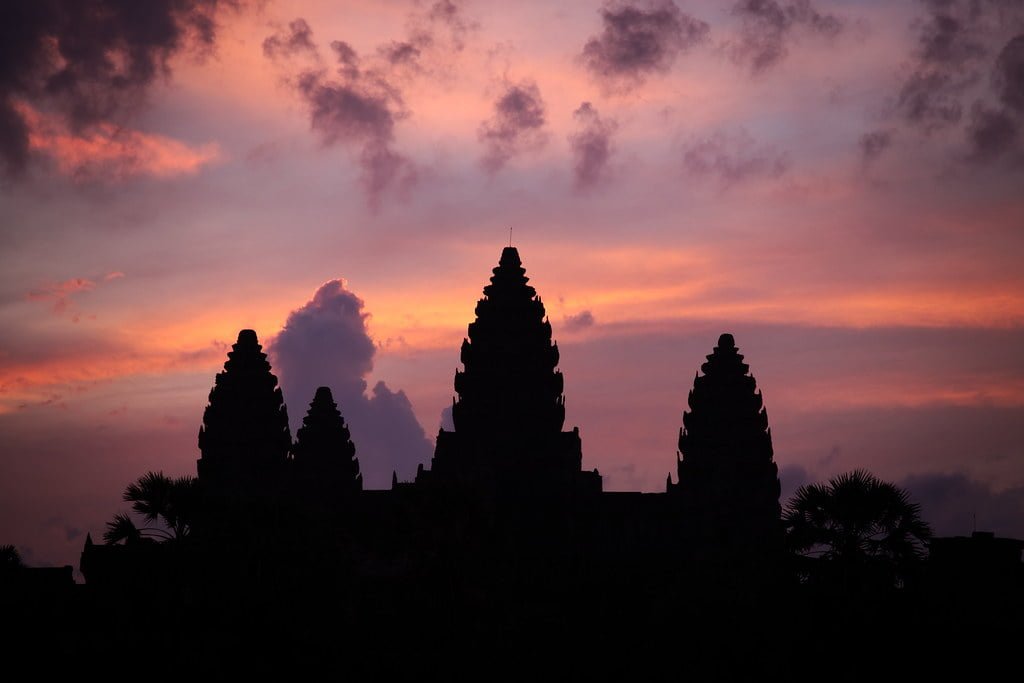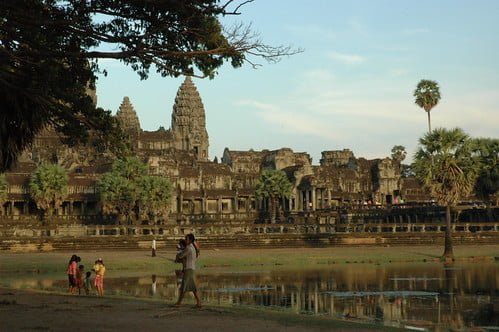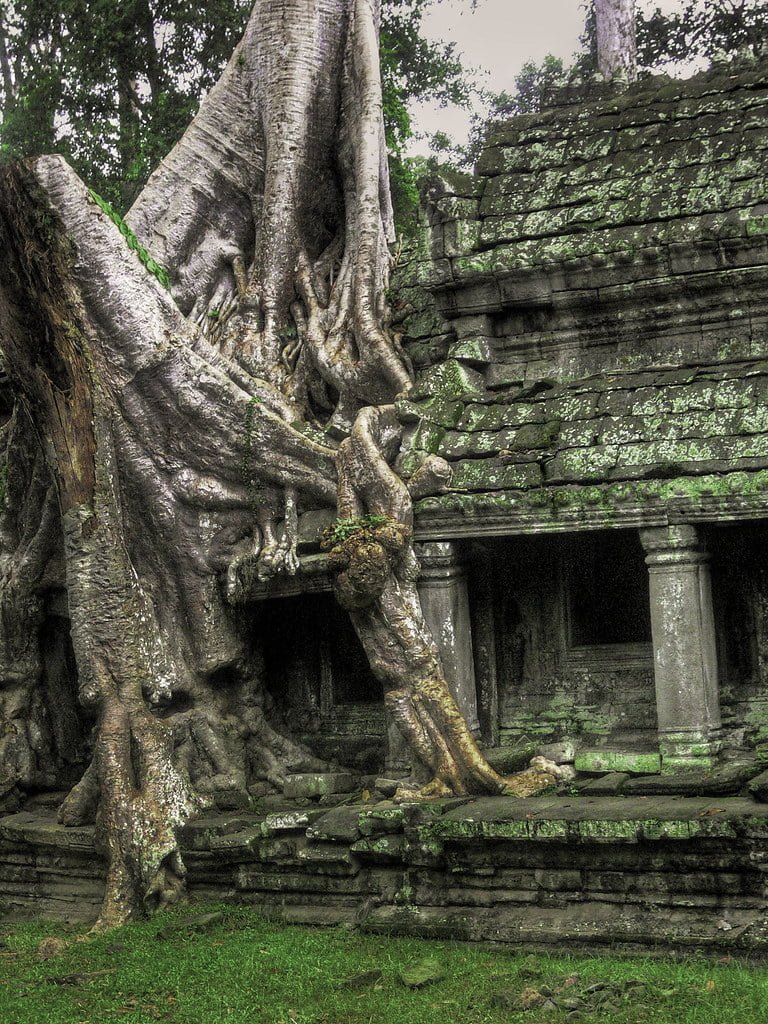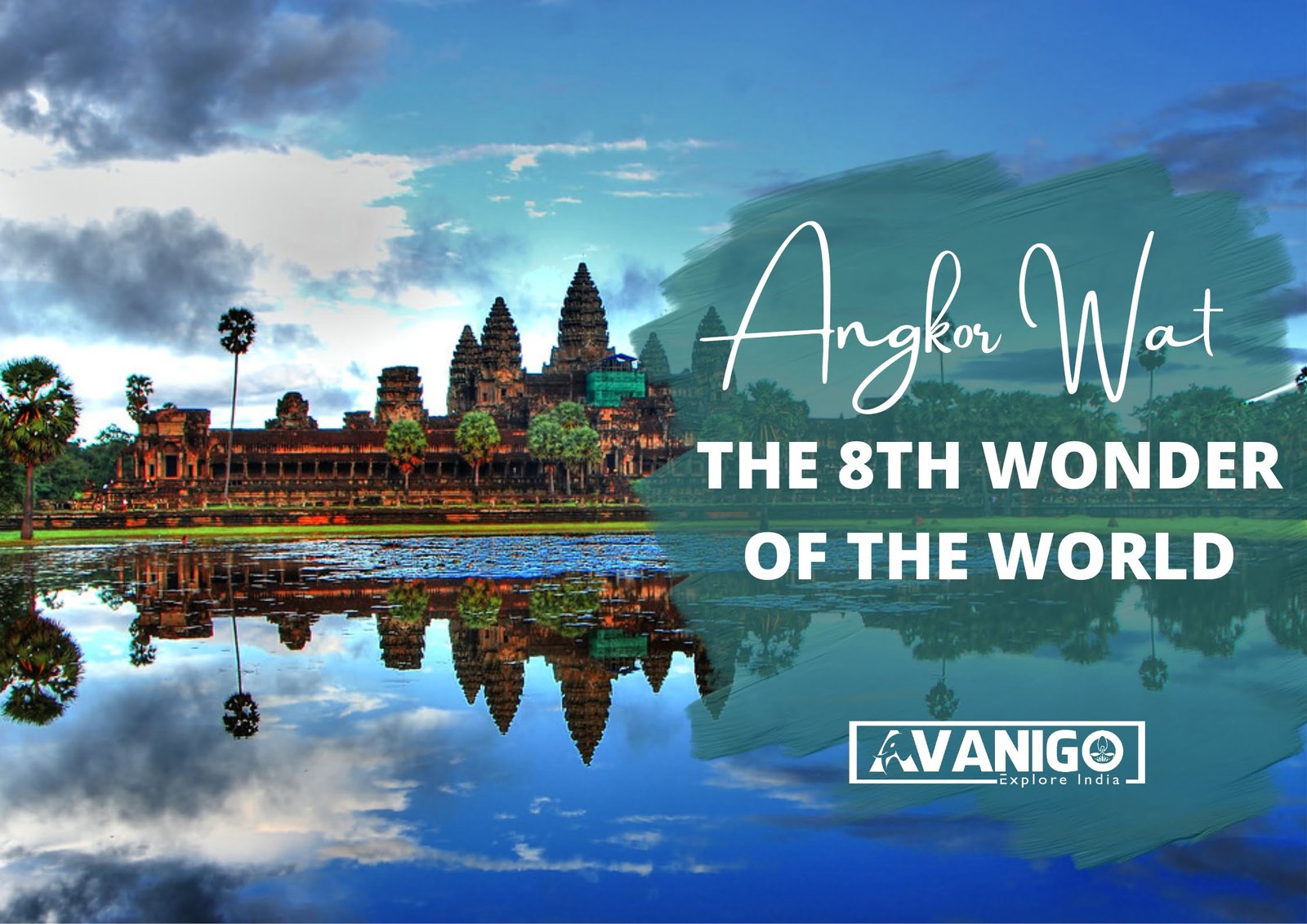This wonder, considered among the most magnificent in the world, requires us to appreciate its magnificence and significance fully. There are mysteries, tales, and extraordinary beauty to be found there. A place has now rightfully taken the world by storm, claiming a title that will cement its place in history for eternity – Angkor Wat 8th wonder.
Quick Navigation
The Origins of Angkor Wat
Key Facts of the Angkor Wat history:
- Ordered to be built in the early 12th century by King Suryavarman II
- Dedicated to the Hindu god Vishnu
- Likely took over 30 years to complete
- Built at the height of the Khmer empire that ruled Southeast Asia
Some records indicate that the building began in 1113 AD under King Suryavarman II of the Khmer Empire. Hindu in religious practice, the king intended it as a state temple to the god Vishnu and proposed its design to represent Mount Meru, the home of Hindu deities. UNESCO World Heritage Sites India List

The Golden Age of the Khmer Empire
- Angkor Wat was created during the empire’s peak
- Khmer Empire covered parts of modern-day Thailand, Laos, Vietnam, Myanmar
- Lasted from 802 AD – 1431 AD
- The combination of conquest and cultural influence extended borders
- Controlled major trade routes
- Mastered complex water management for irrigation
However, more is needed to know what led to this vibrant Empire’s sudden decline in the 15th century. Theories range from foreign invasion to ecological disaster, but historians still debate the multiple factors. By 1432 AD, Angkor was abandoned, with much of its population migrating to closer territories. The decline left Angkor Wat and other temples gradually covered by thick jungle, remaining lost for centuries.
Incredible Facts of Mahabalipuram Temple, India
Facts about Lakshadweep Islands
Purpose and Symbolism
Another mystery shrouding Angkor Wat history is its intended religious purpose. Built as a Hindu temple dedicated to Lord Vishnu, it later became a Buddhist site. The fusion of both religions within its walls reflected the syncretism of religious beliefs during that time in Cambodia.
- The five towers represent Mount Meru, the Hindu abode of gods.
- Carvings show scenes from Hindu epics like Ramayana and Buddhist Jataka tales.
- Was it built initially as a funerary temple or a state temple? Its actual primary function remains to be determined.
Even after centuries of research, the precise symbolism behind many architectural features continues to baffle scholars. Some believe it held an astrological purpose aligned with solar and lunar movements.

Lost Technology
The magnificent stone carvings and intricate architecture demonstrate the advanced engineering skills of the Khmer architects. However, their sophisticated construction techniques have long been lost. How did they lift and assemble huge sandstone blocks without modern machinery?
Advanced hydraulic systems were used, but their mechanism and engineering principles must be fully comprehended. It’s a mystery how they could carve delicate patterns on angled, curved wall surfaces with such precision. Experts are still unraveling the sophisticated mathematics and construction innovations behind this architectural marvel.
Taramati Baradari – The Eternal Symbol of Nizam King’s Love
Cultural and Spiritual Significance
While Angkor Wat serves Buddhist pilgrims today, it functioned as a Hindu temple for over six centuries. Changing religious practices saw it transform roles between the 12th and 16th centuries. Temples around Angkor Wat also provide a lens into daily life in the ancient Khmer empire.
Abandonment and Rediscovery
- Remained a Hindu temple until Buddhism became a dominant religion in Cambodia
- Lacked major maintenance after the 16th century
- Hidden by jungle growth when French explorer Henri Mouhot re-discovered in 1860
- Underwent restoration work in the 20th century
Angkor Wat’s association with Hinduism lasted until Buddhism displaced it in Cambodia. Temple access became limited, and jungle foliage slowly broke apart buildings. Henri Mouhot revealed Angkor Wat news to the Western world in 1860, sparking new interest. Restoration work in the 1900s opened it back up to visitors.
Taj Mahal Facts that Make You Go Wow
Facts about Angkor Wat
Angkor Wat’s true brilliance lies in its design and construction. Symmetry and precision define its central layout, the main sanctum flanked by four smaller ones grouped around a cruciform courtyard. Some of the facts about Angkor Wat are:
- Sprawls over 400 acres, making it the most significant religious structure in the world.
- Built mainly from sandstone and red laterite, with additional use of wood.
- Has over 1000 major structures within its boundaries, along with moats, causeways, and temples.
- It is known for its architectural symmetry, towering steeples, and intricate bas-reliefs decorating walls.
- Hundreds of elaborate apsara and deity carvings are executed with refined craftsmanship.
- Embellished with over 2 million individual stones, the largest single stone weighs around 1.5 tons.
- The core temple stands tall at 42 meters, with the tallest central tower rising 65 meters above the ground.
- Has withstood nature’s fury, remaining remarkably intact considering its immense size. Only 7-10% restoration was needed after centuries of neglect.

Angkor Wat Becomes 8th Wonder of the World
UNESCO finally recognized Angkor Wat’s magnificence in 1992 when it was added to the list of World Heritage Sites. It now attracts millions of tourists annually and serves as a source of pride for Cambodia.
Angkor Wat became the eighth wonder of the world and added further glory, giving unofficial status to sites that exhibit remarkable human achievement, natural beauty, and cultural significance. By surpassing Italy’s Pompeii in this distinguished position, Angkor Wat has joined an exclusive club that includes the Great Pyramids of Giza and the Taj Mahal.

This reaffirms Angkor Wat history as one of humanity’s most incredible architectural and cultural feats. As the quintessence of the mighty Khmer’s artistic skills and civilization, its magnificence is unsurpassed even after centuries of wear from nature. Undoubtedly, it is a wonder that has withstood the test of time.
Golconda Fort, Hyderabad, India – Architecture and History
A Testimony to Glory of a Lost Empire
Even in ruins, its grandeur endured, revealing fragments of a forgotten golden age under successive rulers. Angkor Wat 8th Wonder is an architectural phenomenon that inspired awe as a testimony to humanity’s capacity for creative greatness. A marvel that awakens curiosity about a once mighty empire now faded into obscurity over time. Its mysteries may never all be solved, but the charm of lost splendors lives on.
At AvaniGo, we are passionate about India and its mesmerizing culture. We intend to share the greatness of Indian culture through our articles. To learn more about us and contribute to our website, email us at hello@avanigo.com.

